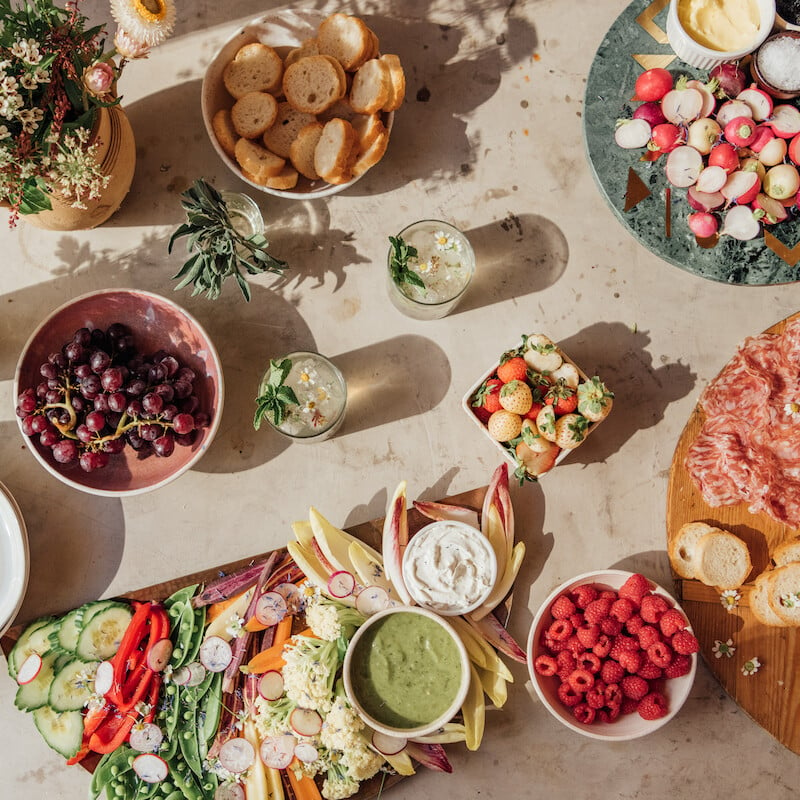Let’s get one thing straight: the conversation surrounding unhealthy snacks isn’t about food guilt. This isn’t about categorizing foods as “good” or “bad.” This isn’t about instilling fear. Most importantly, this isn’t about telling you what you should and shouldn’t eat. Here at Camille Styles, we emphasize feel-good, delicious food. That means that most of the time, we reach for real, whole foods—like colorful produce and hearty grains. After all, these make us feel energized and nourished.
As someone who battled orthorexia for most of my college years, I’m acutely aware that—above all—a healthy relationship with food is far more important than nitpicking every ingredient that goes into my body. Like many, I fell victim to diet culture‘s sneaky yet pervasive messages in my early 20s. These days, my approach is much different. My eating habits are a reflection of what I want for my life: to live long, vibrant, and balanced.
In the spirit of nourishment, today we’re sharing unhealthy snacks that are disguised as popular packaged foods. Remember, it’s not all or nothing. Rather, it’s about being empowered. It’s about understanding that artificial colors, inflammatory oils, and refined sugars shouldn’t be taking up much (if any) of your pantry’s real estate.
Feature image by Michelle Nash.



Eat Real Food, Change Your Life
Truth is, most popular snack foods are packed with additives, preservatives, sugar, and industrial seed oils. These are inflammatory. Meaning, they’re hard for your body to digest. Not to mention, they wreak havoc on blood sugar. But when you focus on nutrient density—and understand how to read an ingredient label—the benefits are a dime a dozen.
Ultimately, being empowered by your nutrition choices will change your life. When you focus on wholesome foods, rather than unhealthy snacks, you improve your energy levels, enhance your immune system, fuel physical activity, and reduce the risk of chronic diseases. Eating real food can also help curb sugar cravings! Best of all, eating this way doesn’t have to break the bank.

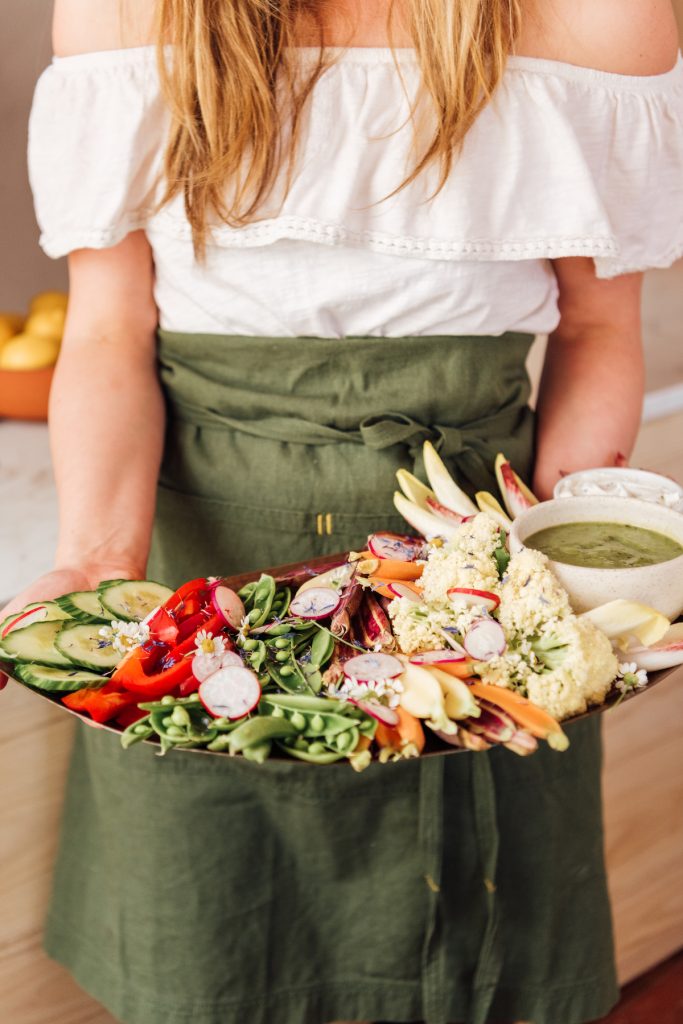
How do you read an ingredient label?
Before we dive into unhealthy snacks, it’s helpful to understand how to read an ingredient label. For this exercise, go grab a bag of chips, box of crackers, or jarred pasta sauce from your pantry. Find the list of ingredients (typically, it’s beneath the nutrition label). The ingredient that weighs the most is listed first. The ingredient that weighs the least is listed last. In other words, the ingredient label lists each ingredient, in descending order by weight.
Don’t Be Deceived By The Front Of The Box
When it comes to choosing healthy snacks (or any packaged food), understanding the ingredient list is key. Let’s take these for an example. Upon first glance, you might see “cracked black pepper” and “olive oil” and assume these crackers are a healthy choice. Not so fast. Not only are these grains sprayed with glyphosate, but olive oil is the second-to-last ingredient listed. Before that? Inflammatory oil (canola oil) and multiple forms of sugar. There is more sugar and canola oil than there is black pepper and olive oil. It’s deceiving!
In essence, what you read on the front of a packaged food isn’t necessarily what’s reflected on the back. Use this information to empower your food choices.


“Crowding In” vs. “Crowding Out” Unhealthy Snacks
If you can’t imagine the thought of giving up your favorite snacks, I hear you. As mentioned, this isn’t all-or-nothing. However, one way to start eating more real, whole foods, is this: increase the portion of healthy foods you eat—while continuing to eat some of your favorite processed foods—but in smaller portions.
When you fill up on fruits, vegetables, whole grains, high-quality protein, and healthy fats, your cravings for junk foods will slowly subside. Not to mention, when you’re satiated, you tend to snack less. This concept is known as “crowding in” healthy foods and “crowding out” junk foods. It’s an approach to healthy eating that focuses on adding in nutritious foods and naturally crowding out less nourishing options.


Swap This… For That
Curious to know a few of my favorite processed food swaps? From savory to sweet, these brands know how to make your favorite snack foods taste delicious, without artificial ingredients:
| Swap This… | …For That |
| Wheat Thins | Simple Mills Crackers |
| Cheeze-Its | Annie’s Cheddar Squares |
| Oreos | Catalina Crunch Sandwich Cookies |
| Betty Crocker Cake Mix | Cherrybrook Kitchen Baking Mix |
| Fruit Loops | Love Grown Kids Cereal |
| Clif Bar | GoMacro Bars |
| Orville Redenbacher’s Classic Popcorn | LesserEvil Popcorn |
| Coca Cola | Olipop Vintage Cola |
More info on foods we recommend limiting, here.


8 Unhealthy Snacks Disguised As Health Foods
Sometimes, we can’t resist the handful of Oreos. I get it. Enjoy them and move on! Having food freedom is an important part of your relationship with food. That said, we want to look at health from the lens of practicality and sustainability. What you do today—and most days—is what builds a healthy future. It’s not about eating perfectly balanced for every meal. Instead, most of the time you want to commit to eating well in order to feel your best.
Once you learn how to minimize artificial ingredients, trans fats, inflammatory oils, and sneaky forms of sugar, your body and mind will thank you. Without further ado, let’s dive into snacks that are actually unhealthy snacks in disguise. Thanks to clever marketing, we’re lead to believe these are nourishing options to fuel busy back-to-school days and an overflowing inbox.

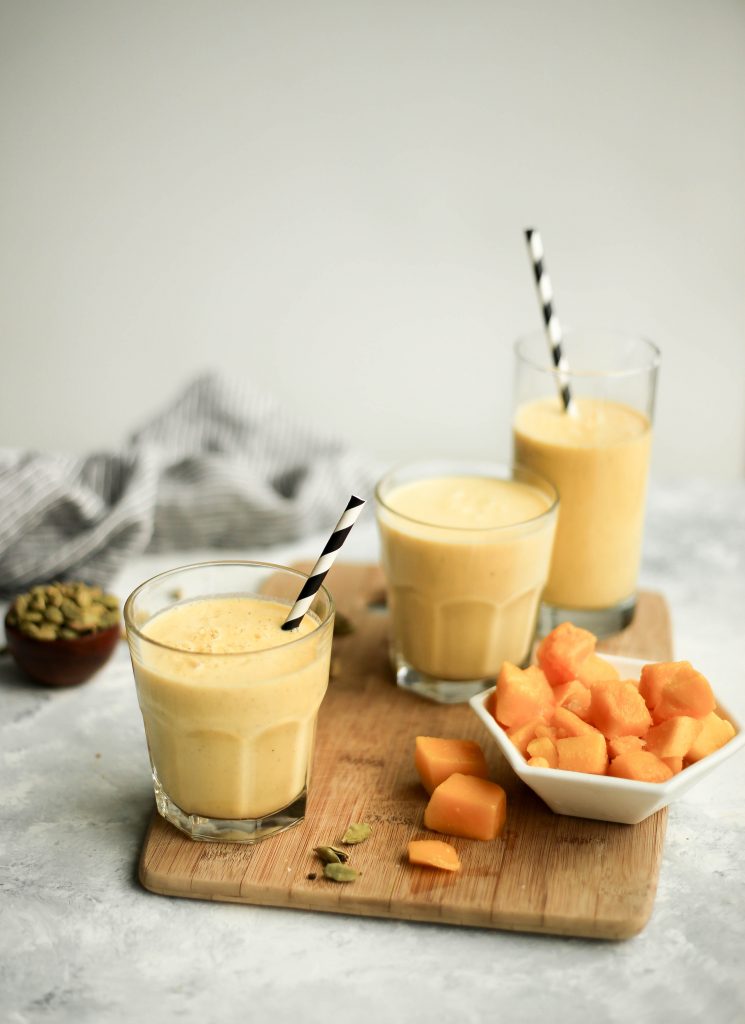
1. Flavored Yogurt
That strawberry swirl fruit-on-the-bottom or chocolate chip crunch topping in your yogurt? It often packs a sugary punch. In fact, some flavored yogurts contain more sugar in one serving than some candy bars. Plain, organic yogurt contains gut-promoting live bacteria, but when sugary jams and “fruit” are added, you’re also consuming table sugar and other processed ingredients.
Healthy flavored yogurt, on the other hand, contains minimal added sugar, no carrageenan, avoids preservatives, and does not contain highly processed gums or thickeners. When in doubt, choose plain, whole milk yogurt (or Greek yogurt). My favorite flavored yogurt brands are Siggi’s, Wallaby, and Maple Hill.
Recipe: Sweet and Salty Mango Lassis

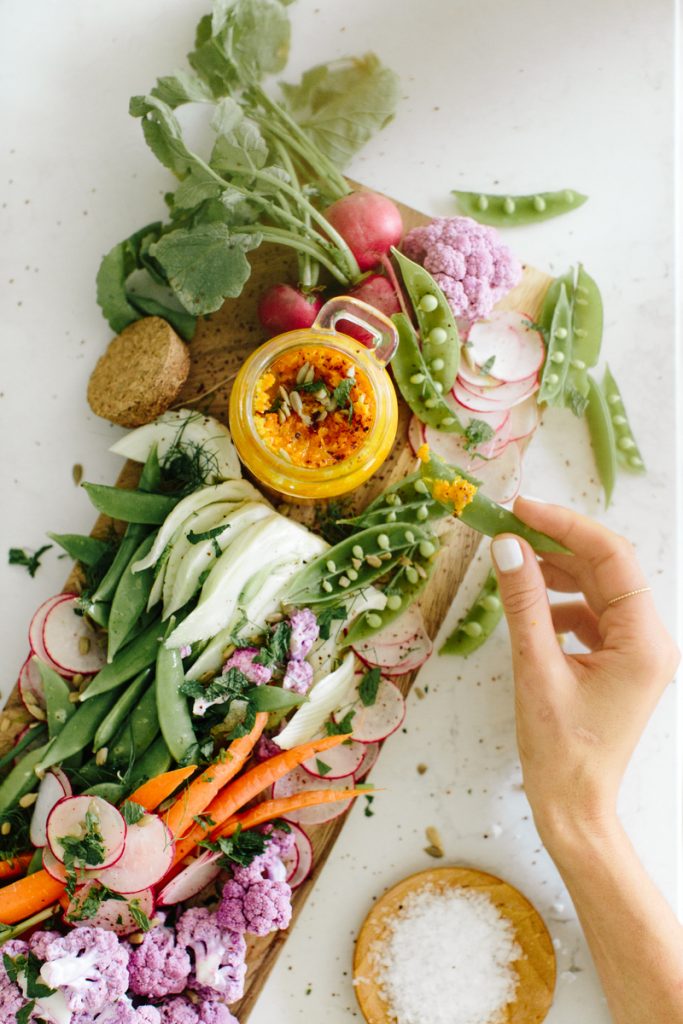
2. Veggie Chips
While veggie straws and veggie chips aren’t the worst snack choice, they’re not as healthy as their name implies. Take these, for example. Upon first glance, you might think—Oh, garden veggie straws! These must be healthy! Unfortunately, these are mostly potato starch, inflammatory oils, sugar, and a bit of spinach powder. Even these (which are marketed as organic) are made from corn flour, sugar, potato starch, and inflammatory oils. Instead, opt for Rhythm snacks—or better yet, freshly-chopped crudités and a store-bought dip, like hummus or tzatziki.

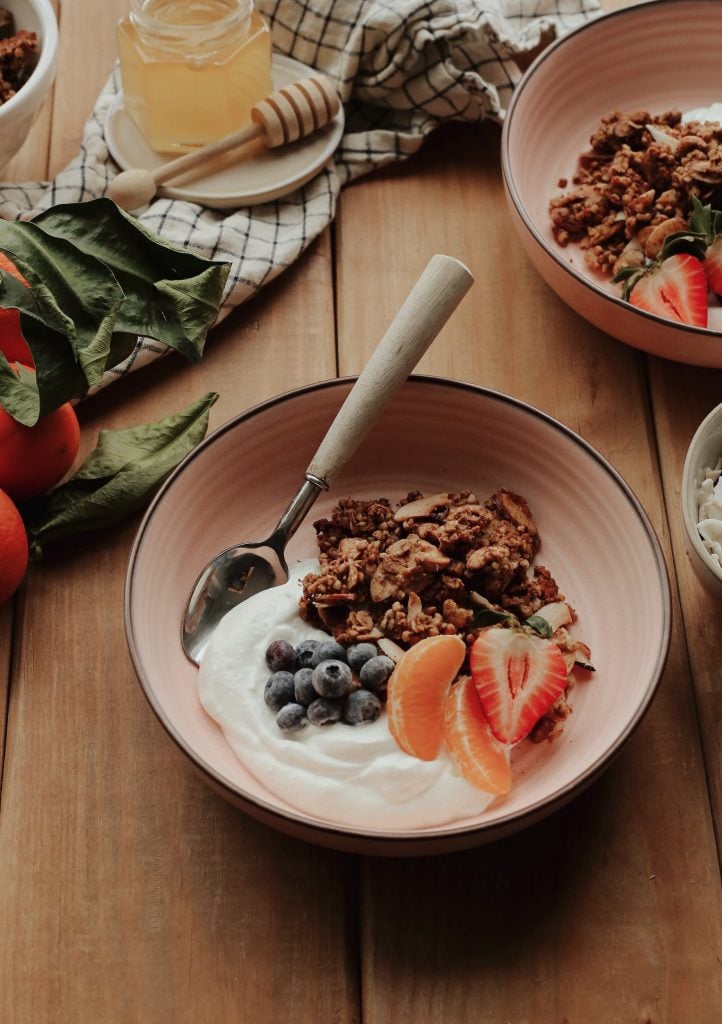
3. Granola Bars
Most people consider granola bars a convenient and healthy snack. In some cases, granola bars can be a good source of fiber and protein to help curb cravings between meals. Many brands are also budget-friendly, portable, and pre-portioned for a busy life on the go. However, some granola bars contain as much sugar, carbs, and calories as candy bars. Despite marketing claims—like, “heart healthy” and “low fat,” many are loaded with added sugar, inflammatory oils, and artificial ingredients.
While these certainly have more nourishing ingredients than other popular granola bars, each bar contains 13 grams of added sugar. Instead, try these bars from Munk Pack (less than 1 gram of sugar, per bar), these granola snack clusters from MadeGood, or these chewy bars from Cascadian Farm.
Recipe: Chai Spice Buckwheat Granola


4. Protein Bars
Like granola bars, many of us turn to protein bars to provide nutrients and an energy boost while we’re on the go—or after a workout. But as with most processed foods, protein bars aren’t created equal. Some are full of doctor and nutritionist-approved ingredients, but others are packed with heavily processed soy, inflammatory oils, and sugar. When buying protein bars, aim for at least 12 grams of protein and less than 5 grams of added sugar. And remember, the fewer the ingredients, the better. A few favorites: B.T.R. Nation, Atlas Protein Bar, and No Cow.
Recipe: Raspberry Cocoa Energy Balls

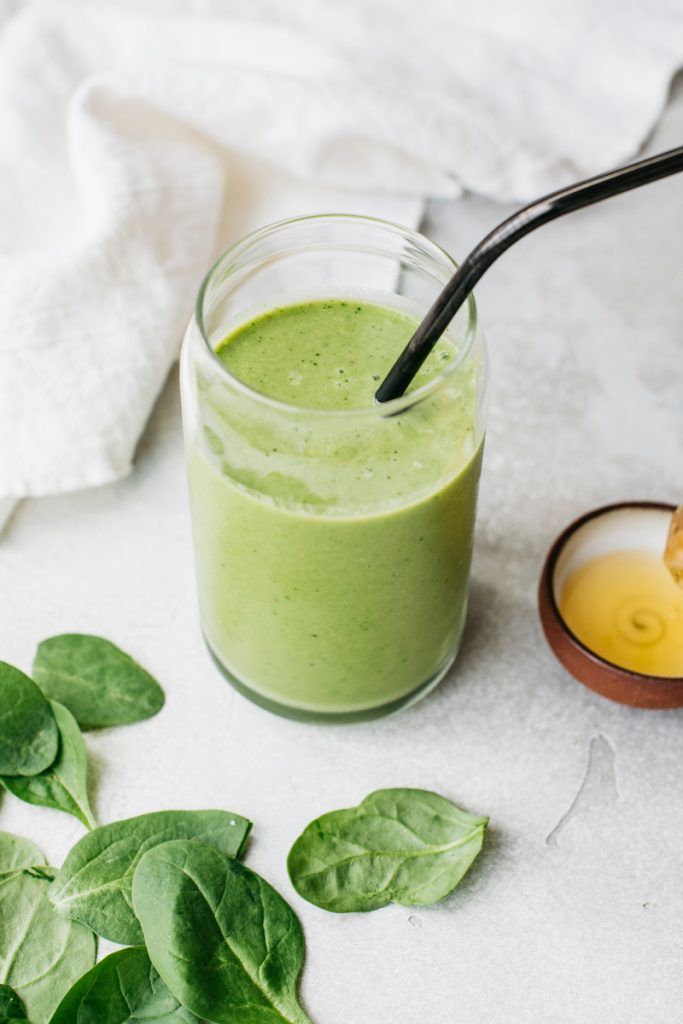
5. Fruit Juice
Fruit is inherently healthy, of course. Fruit is rich in energy, nutrients, and antioxidants, but all fruit contains fructose—a form of sugar. And when they’re processed into fruit juices, a majority of their nutrients (including the fiber) are stripped. What’s left? Mostly, sugar. This spikes your blood glucose levels. If you’re out and about, instead of grabbing one of these for a snack, order a smoothie with berries, protein powder, greens, peanut butter, and non-dairy milk. Otherwise, make a balanced smoothie at home!
Recipe: Matcha Plant Power


6. Cereal and Granola
By now, we know that cereals with marshmallows or artificial colors are obvious sugar bombs. That said, even healthy-seeming cereals—and granola—can spike your blood sugar. Especially if they don’t have a decent amount of fiber. This, for example, is a delicious granola option, but even a mere 1/2 cup boasts 12 grams of sugar. Downing a bowl of cereal or granola for breakfast—doused in oat milk and topped with fruit—is an easy way to spike blood sugar.
Instead, opt for a lower-sugar, high-protein cereal or granola, like Lovebird, Three Wishes, Love Grown, Purely Elizabeth, NuTrail, or Nature’s Path. When pouring a snackable bowl of cereal, add a variety of high-fiber/high-fat toppings like shredded coconut, chia seeds, hemp seeds, pumpkin seeds, walnuts, etc. These aid in satiety and balance blood sugar.


7. Crackers
I love a good cracker. They’re the perfect vehicle for dips, cheese, a slice of deli turkey, a generous scoop of guacamole—you name it. They’re the ultimate snack food (other than a handful of chips). However, most are low in fiber, high in carbs, and equally high in sodium. Not only do they fall short in providing the energy boost they’re touted to offer, but you’re not likely to feel satisfied. Instead, reach for crackers that are rich in healthy fats, fiber, and protein. I’m obsessed with Ella’s Flats (crispy, flavorful, and packed with protein, but Simple Mills and Mary’s Gone are also nourishing options.


8. Trail Mix
Last but not least, trail mix. Like other processed snacks, it comes down to ingredients. If your store-bought trail mix is loaded with raw nuts, no sugar-added dried fruit, seeds, and dark chocolate chips, you’re headed in the right direction. This, on the other hand, is loaded with added sugar and artificial ingredients.
Plus, keep in mind that the serving size for most trail mix bags is 1/4 cup—by the time you have a couple of handfuls, you’re eating more sugar than intended. This keto-friendly trail mix is delicious, as is this savory option. This bag has no added sugar or oil and Roastery Coast has a great balance of healthy fats and energizing carbs.

